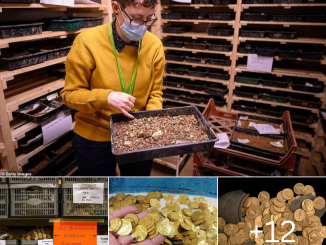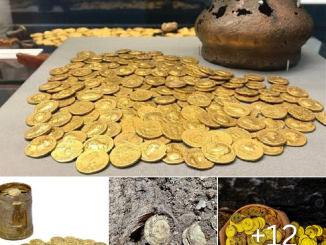A “second treasure” has just been revealed through the stunning jewelry collection of Queen Hetepheres I, one of the most powerful women of the Old Kingdom of Egypt.
The tomb of Queen Hetepheres I – queen of the 4th Dynasty of Egypt’s Old Kingdom – was excavated in 1925 by an expedition from Harvard University and the Museum of Fine Arts (USA), containing a collection of collection of silver artifacts more than 4,600 years old, the largest and most famous of early Egypt, according to Sci-New.
In a study just published in the Journal of Archaeological Science: Reports, Queen Hetepheres I’s collection of silver-gold, jewel-encrusted jewelry was reanalyzed, revealing another “treasure” hidden within herself. the materials from which they are made.
Two of Queen Hetepheres I’s beautiful silver jewels
The research team led by Dr. Karin Sowada from Macquarie University (Australia), these jewelry are made from a type of silver that contains small amounts of gold, copper, lead, silver chloride, copper chloride and some other minerals. .
The isotope ratio of minerals within this material is only consistent with ores from the Cyclades island group (belonging to the Aegean archipelago – Egypt). In lower probability, it could be from the village of Lavrion (Attica – Egypt).
But wherever it came from, it was Greek silver, not Egyptian gold-bearing silver as older documents suspected.
Thus, the famous queen’s jewelry collection accidentally revealed an unknown trade network, the earliest and unknown trading fleets between Egypt and Greece.
In addition, the jewelry also shows an amazing level of craftsmanship when scanned through an electron microscope, for example the processing that makes bracelets and rings extremely resistant to breakage – clearly they intact after 4,600 years.
They also have the ability to have gold added during the alloying process to improve their beauty and formability.
Hetepheres I’s bracelet and ring set was found in a wooden box covered with gold plate, including 20 pieces, exquisitely crafted, decorated with turquoise, lapis lazuli, stone, painted plaster… many colors.
According to the research team, these discoveries have tripled the rarity of these artifacts.



